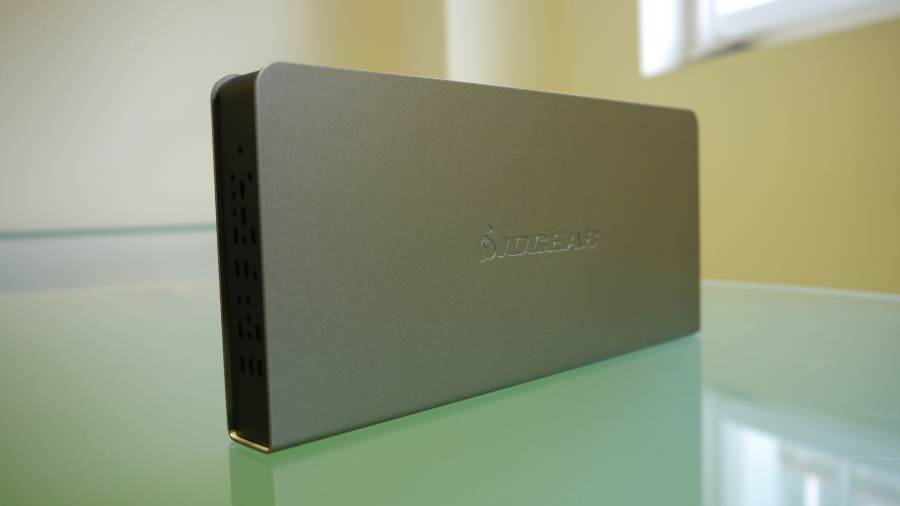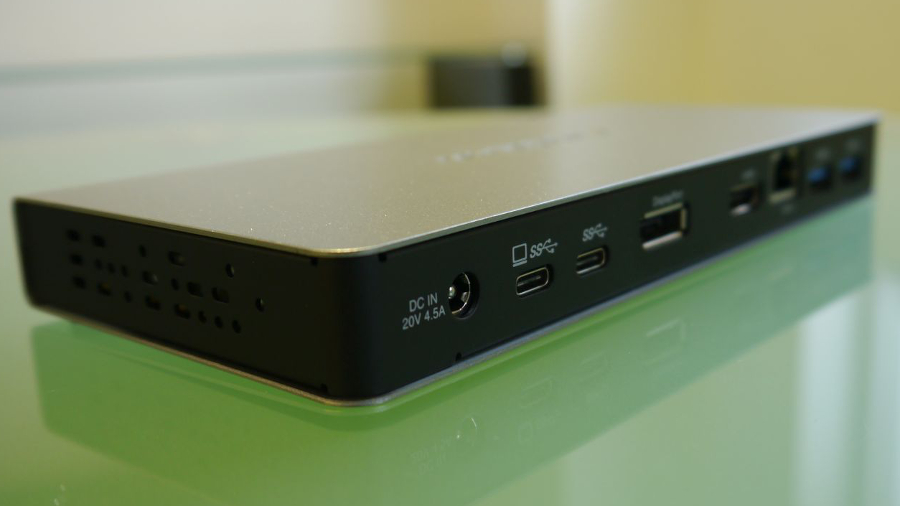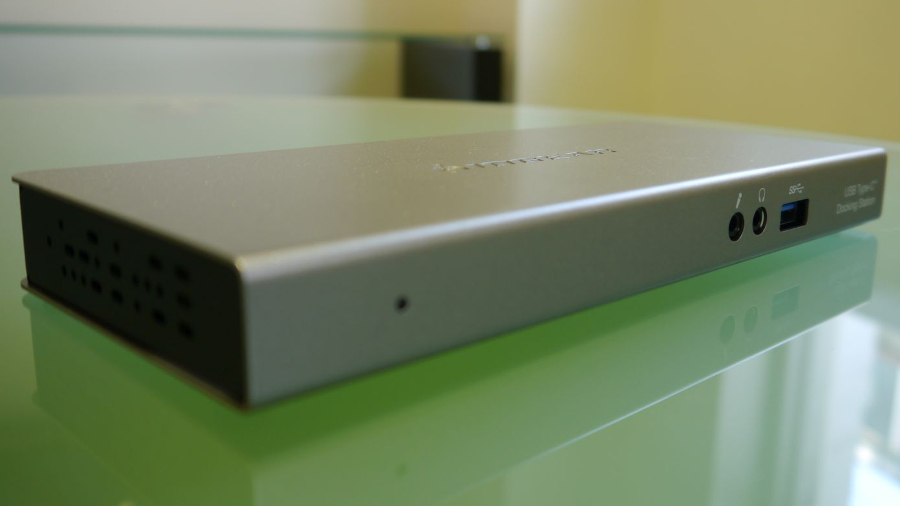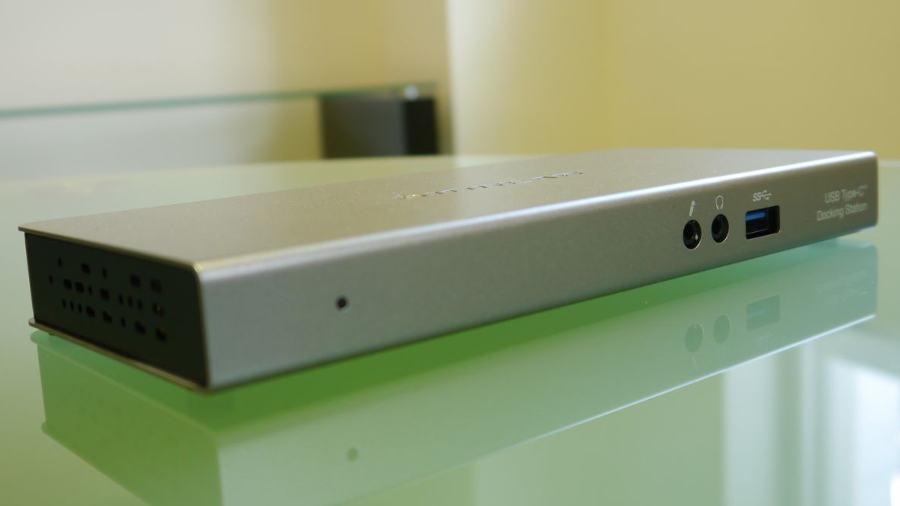Early Verdict
This docking station does what it says on the tin without any hitches, and while it is expensive, we expect competitors to pop up swiftly as USB Type-C becomes more prevalent.
Pros
- +
Supports 4K
- +
Design is exquisite
- +
Plenty of ports
Cons
- -
No support for Windows 7
- -
There's no card reader
Why you can trust TechRadar
Docking stations are becoming more popular as a convergence of technological improvements and workplace changes make them logical extensions of laptops.
More and more organisations now allow their employees to work remotely which, in turn, fosters the need to obtain relevant peripherals to maintain productivity.
That's monitors, keyboards and mice; the problem being that you often need a hub – the docking station – to maintain the link between all of them.
And until now, you needed two cables to make full use of your docking station setup, one for the power supply unit and one to connect to the actual docking station. That means having a secondary PSU if you commute frequently between two locations.
The emergence of USB Type-C together with the rapid adoption of that connector by most vendors (thanks to Apple) means that a one-cable setup – with the docking station charging your laptop – is now possible.

IOGear sent us its freshly announced USB-C Docking Station with power delivery (product code GUD3C01) which is compatible with Windows (8.1 and newer) and Mac (10.10.5 or better). No Linux here, and most importantly, no Windows 7.
Note that this device is not available in the UK, only in the US where it sells for about $200 (around £155, AU$265) making it an expensive but potentially very useful investment for businesses.
Made almost entirely out of metal, the docking station is compact (200 x 91 x 21mm) and heavy (562g) which makes it quite dense.
It does look solid and classy, and while the colour scheme doesn't match the Apple MacBook, it does perfectly fit that of the Dell XPS 13.
The weight doesn't include the equally massive power supply unit which, at 520g, is almost as heavy as the docking station it powers.
There's a good reason why the power supply is both external and that massive, and it's to do with the amount of power it is expected to deliver.
At 90W (20V, 4.5A), it is powerful enough to drive all but desktop replacement and mobile workstation laptops.
Popular models like the Dell XPS 13 or the Apple MacBook consume less than half that amount which should leave more than enough for other peripherals (your monitor is likely to have its own power supply).
The device is best positioned flat, with four rubber feet ensuring that there's some air circulating below the docking station to keep it cool. Also helping in the battle to avoid overheating are a good number of ventilation holes on either side of the GUD3C01.

Most of the 10 connectors found on the dock are located at the back: two USB 3.1 Type-C ports (one of which is a fast charging one), three USB 3.0 (one at the front), two front audio ports, a Gigabit Ethernet port, aN HDMI one and a DisplayPort that supports MST (Multi-Stream Transport).
We are glad to report that the IOGear worked without any hiccups when we plugged it into the Xiaomi Air 12 Ultrabook. The GUD3C01 was immediately discovered and all the peripherals plugged in (4K monitor, keyboard and mouse) worked perfectly.
A few things to note, though: you will need to install the latest DisplayLink drivers in order to make the most out of this device. That isn't mentioned in the leaflet that accompanies the dock. The Windows installation driver on IOGear's website installs a USB 3.0 to Gigabit Ethernet controller driver.
Also bear in mind that you'll still be constrained by the hardware. The m3-6Y30 CPU on our test laptop can do 4K at up to 30Hz over HDMI and no amount of external hardware will change that. However, this wasn't the case with DisplayPort where we can report that the device successfully pushed 4K content at 60Hz. Hurrah!

Only one of the two USB-C ports (the one closer to the power connector) is powerful enough to drive a laptop. A card reader might have been helpful as well, as a couple of the slimmer laptops (new MacBook and Xiaomi Air 12) don't have one of these.
As expected, the docking station did warm up significantly after a couple of hours, hence why it's a good idea to have the metal chassis. We didn't encounter any issues running 4K content via DisplayPort or HDMI.
Early verdict
In an ideal world we'd have an entirely wireless office without any wires necessary to charge or transmit data to peripherals. Unfortunately, that won't happen anytime soon, leaving the trusty cable to power and transfer data to your device.
Which is why, in a world that's moving away from full-size desktops, devices such as docking stations will become more and more important for flexible working. The arrival and rapid adoption of USB Type-C will accelerate that trend.
One thing that is not working right now is compatibility with devices other than laptops. Since USB Type-C is present on tablets and smartphones, it is certainly only a matter of time before docking stations can be used with them.
For now, the IOGear USB-C Docking Station is a great tool when used with a compatible laptop. You won't be able to drive dual 4K monitors at 60Hz with it but that's pretty much the only stumbling block here (along with the fact that it's no good for Windows 7 users).
The ability to connect only one cable and save your existing power supply unit for another location is something that shouldn't be underestimated by businesses looking to maximise productivity.
- Also check out our top 10 best monitors and displays for business users

Désiré has been musing and writing about technology during a career spanning four decades. He dabbled in website builders and web hosting when DHTML and frames were in vogue and started narrating about the impact of technology on society just before the start of the Y2K hysteria at the turn of the last millennium.
What is a hands on review?
Hands on reviews' are a journalist's first impressions of a piece of kit based on spending some time with it. It may be just a few moments, or a few hours. The important thing is we have been able to play with it ourselves and can give you some sense of what it's like to use, even if it's only an embryonic view. For more information, see TechRadar's Reviews Guarantee.
